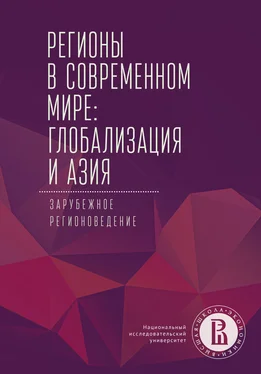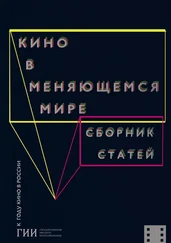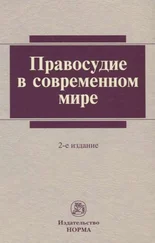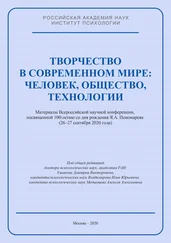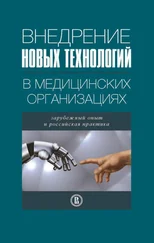Since 1988, Myanmar political activists had been trying to develop democracy in the country. However, they were suppressed by the Military government for over two decades, from 1988 to 2011. Therefore, majority of Myanmar people did not support the junta. They considered the government supporters and partner countries as traitors. Whenever the military government was under international pressure, China always stood by their side and supported with loans and investments [U Myo-Thit, 2017]. It has resulted in the development of the Sinophobia in Myanmar. The citizens did not trust Chinese investments because of their lack of duties for social responsibilities. Beijing understood for those sentiments and, therefore, tried to smooth every process for their investments in Myanmar with the Junta
However, the Chinese policies backfired when President Thein Sein’s government listened to their follow people’s voices. Consequently, the Beijing became concerned when the opposition was elected in the general election in 2015 [BBC, 2019]. In his trip, Wang Yi expressed hopes to his counterpart, Daw Aung San Su Kyi that Chinese interests in Myanmar will continue to be expected. The present situation of Sino-Myanmar relations, however, has many unresolved problems such the Chinese role in the Myanmar cease-fire, Myitsone Dam General Project and border issues.
Open for Business? Corporate Crime and Abuses at Myanmar Copper Mine // AmnestyInternational,February2015.URL:https://www.amnesty.org/en/documents/asa16/0003/2015/en/ (date of access: 19.02.2020). (in English)
A. Clapp Priscilla.China’s Relations with Burma: Testimony Before The U.S-China Economic and Security Review Commission on China’s Relations with Southeast Asia // United States Institute of Peace, 2015. URL: http://www.usip.org/publications/2015/05/13/china-s-relations-burma (date of access: 19.02.2020). (in English)
Atsuko Mizumo.Economica Relations Between Myanmar and China // JICA Research Institute, Department of International Economy and Business // Faculty of Economics // Kyushu University, Japan, 2016. URL: https://link.springer.com/chapter/10.1007/978-4-431-55735-7_8 (date of access: 19.02.2020). (in English)
Copper Mine Investigation Commission, Letpadaung Copper Mine Investigation Commission Issues Final Report // The President’s Office of The Republic of the Union of Myanmar, April 2013. URL: http://www.charltonslaw.com/letpadaung-investigation-commission-issues-final-report/ (date of access: 19.02.2020). (in English)
China-Myanmar agrees to deepen comprehensive strategic cooperation // Xinhuanet, 2014. URL: http://news.xinhuanet.com/english/china/2014-11/15/c_133790813.htm (date of access: 19.02.2020). (in English)
Cheny Ang Li and James Char.China-Myanmar Relations Since Naypyidaw’s Political Transition: How Beijing Can Balance Short-Term Interests and Long-Term Values // S. Rajaratnam School of International Studies, 2015. URL: https:// www.rsis.edu.sg/wp-content/uploads/2015/03/WP288_150316_China-Myanmar-Relations (date of access: 06.01.2020). (in English)
Debby Sze Wan Chan.China’s Diplomatic Strategies in Response to Economic disputes in Myanmar // In. J. International Relations of the Asia-Pacific, Vol. 00, 2018, pp. 1–30, Oxford Academic. URL: https://academic.oup.com/irap/advance-article/doi/10.1093/irap/lcy026/5149704 (date of access: 01.01.2020). (in English)
Lauren Decicca.In the Shadow of Letpadaung: Stories from Myanmar’s Largest Copper Mine // National Resource Governance Institute, 2015. URL: https:// resourcegovernance.org/blog/shadow-letpadaung-stories-myanmars-largest-coppermine (date of access: 01.01.2020). (in English)
Myanmar Cracks Down on Protest at China-owned Mine // China Digital Times, 2012. URL: http://chinadigitaltimes.net/2012/11/myanmar-cracks-down-on-protestat-china-owned-mine/ (date of access: 02.01.2020). (in English)
Myanmar Wanbao Company Limited. URL: http://www.myanmarwanbao.com.mm/mm.html (date of access: 03.01.2020). (in English)
Maung Aung MYOE, Myanmar’s China Policy since 2011: Determinants and Directions // Int. J. Journal of Current Southeast Asian Affairs, 2015, Vol. 34. No. 2. Pp. 21-54. URL: https://journals.sub.uni-hamburg.de/giga/jsaa/article/view/872/879. Html (date of access: 05.01.2020). (in English)
Maria Abi-Habib.How China Got Srilanka to Cough Up a Port// The New York Times, 2018, URL: https://www.nytimes.com/2018/06/25/world/asia/china-sri-lanka-port.html (date of access: 02.01.2020). (in English)
Prashanth Paremeswaran, China’s Influence in Myanmar Facing Growing Scrutiny: Beijing Is still Struggling to Adapt To Myanmar’s New Landscape // Di- plomat Magazine, 2015. URL: http://thediplomat.com/2015/01/chinas-influence-in-myanmar-facing-growing-scrutiny/ (date of access: 02.01.2020). (in English)
Sudha Ramachandran.Chinese Influence Faces Uncertain Future in Myanmar // The Jamestown Foundation, Global Research & Analysis, 2016. URL: https:// jamestown.org/program/chinese-influence-faces-uncertain-future-in-myanmar/ (date of access: 02.01.2020). (in English)
Toh Han Shih.China’s rivals catching up in investment race in Myanmar // South China Morning Post, 2014. URL: http://carnegietsinghua.org/2014/01/25/chinese-investment-is-key-to-myanmar-s-reforms-pub-54299 (date of access: 04.01.2020). (in English)
Tang Xiaoyang.Chinese Investment is Key to Myanmar’s Reform // Carnegie-Tsinghua, Center for Global Policy, 2014, URL: http://carnegietsinghua. org/2014/01/25/chinese-investment-is-key-to-myanmar-s-reforms-pub-54299 (date of access: 02.01.2020). (in English)
Timo Kivimä ki.Politics of Economic Relations Between China and Myanmar // In Book: Chinese Global Production Networks in ASEAN, 2016. URL: https://www.researchgate.net/publication/300130508_Politics_of_Economic_Relations_Between_China_and_Myanmar (date of access: 05.01.2020). (in English)
Yun Sun.Can the NLD and China usher in a new era in relations? // The Myanmar Times, 2015. URL: http://www.mmtimes.com/index.php/opinion/18167-can-thenld-and-china-usher-in-a-new-era-in-relations.html (date of access: 05.01.2020). (in English)
Yun Sun.China’s Strategic Misjudgement on Myanmar // Int. J. Journal of Current Southeast Asian Affairs, 2012, Vol. 31. No. 1. P. 73–96. URL: https:// journals.sub.uni-hamburg.de/giga/jsaa/article/view/513.html (date of access: 09.01.2020). (in English)

Арктическая политика республики Индия
ШАУМЯН ТАТЬЯНА ЛЬВОВНА
кандидат исторических наук, руководитель Центра индийских исследований Института востоковедения РАН
tshaumyan@gmail.com
В статье анализируются значение геополитического региона Арктики, основные направления внешней политики Индии в Арктике, происходящие глобальные процессы, такие как глобальное потепление и таяние арктических льдов; рассматривается значение Северного морского пути с точки зрения использования его для осуществления коммуникаций; показана политика арктических и неарктических государств, расширение их сотрудничества в этой зоне. Взаимодействие российских и индийских компаний в разработке арктических месторождений определяется стремлением подтвердить заинтересованность в Индии как важном союзнике на мировой арене. Индия стремится сохранить для себя возможность маневра при участии в решении арктических проблем, используя членство в Арктическом совете. Она намерена принимать активное участие в инициативах, связанных с проблемами Арктики. Партнерство Дели с Россией может способствовать сдерживанию Китая в его соперничестве с Индией в борьбе за энергетические ресурсы Арктики.
Читать дальше
